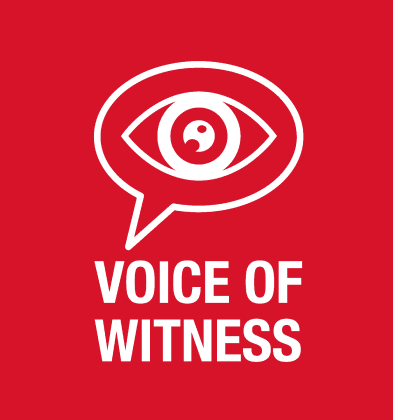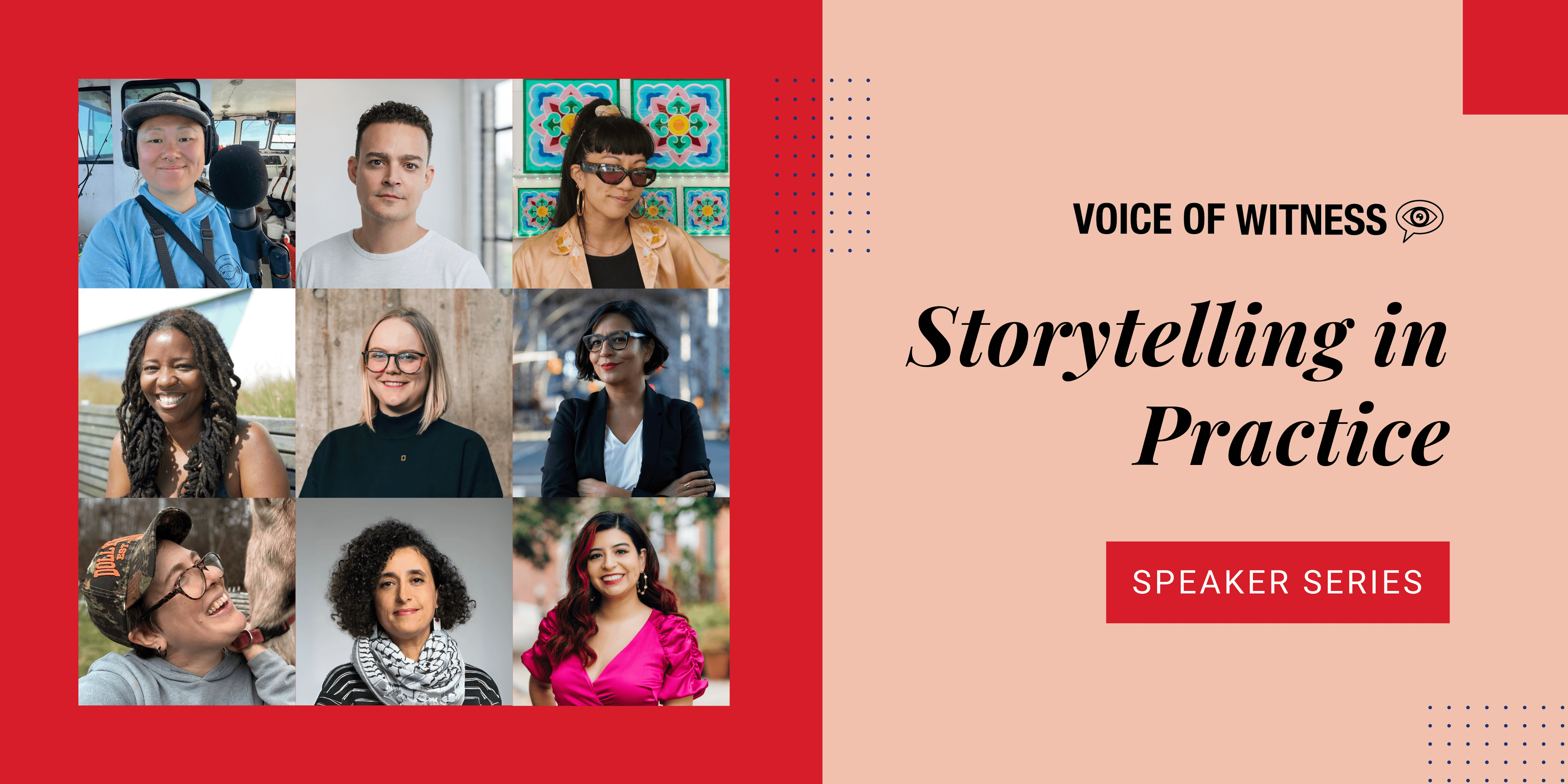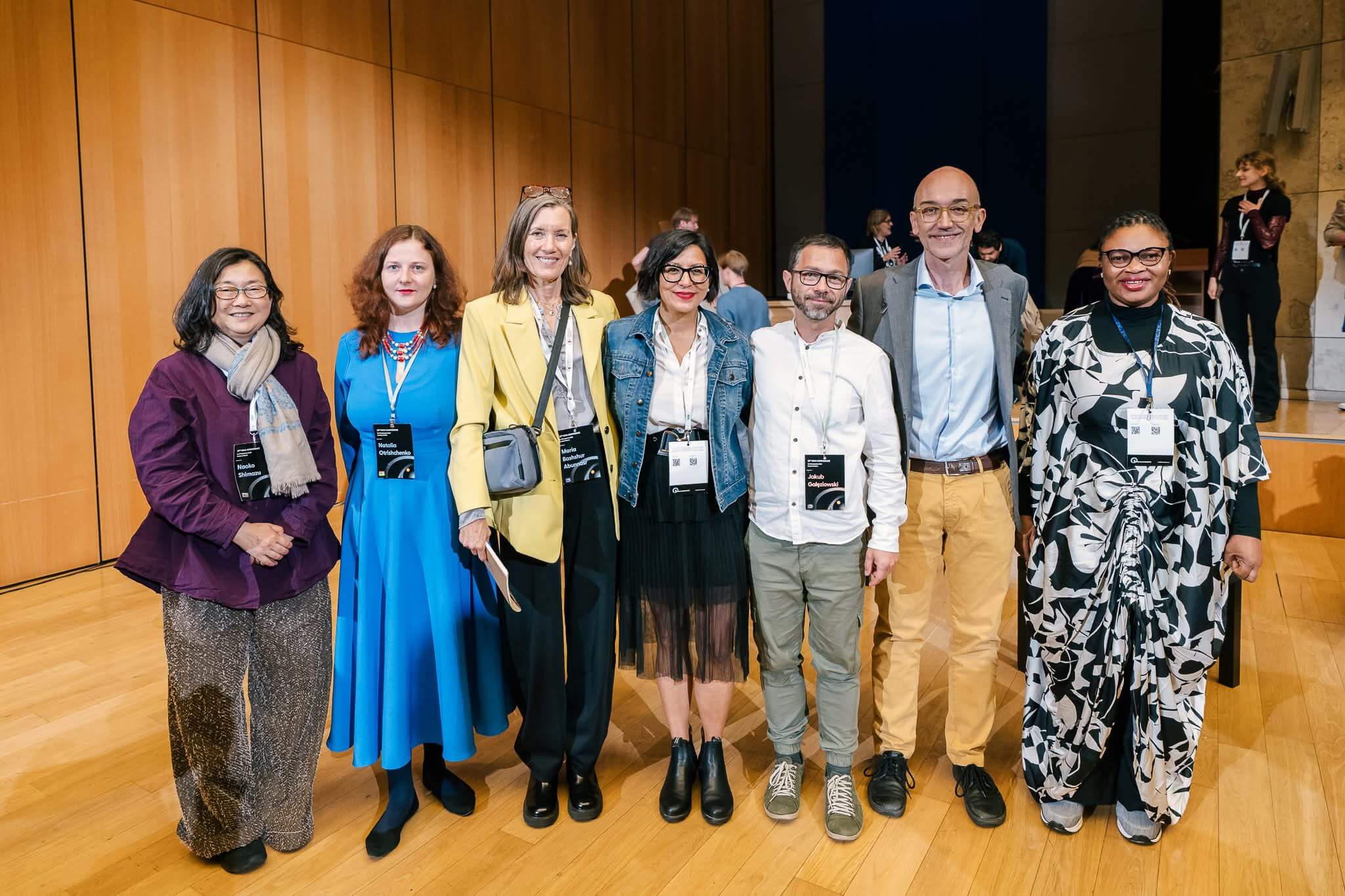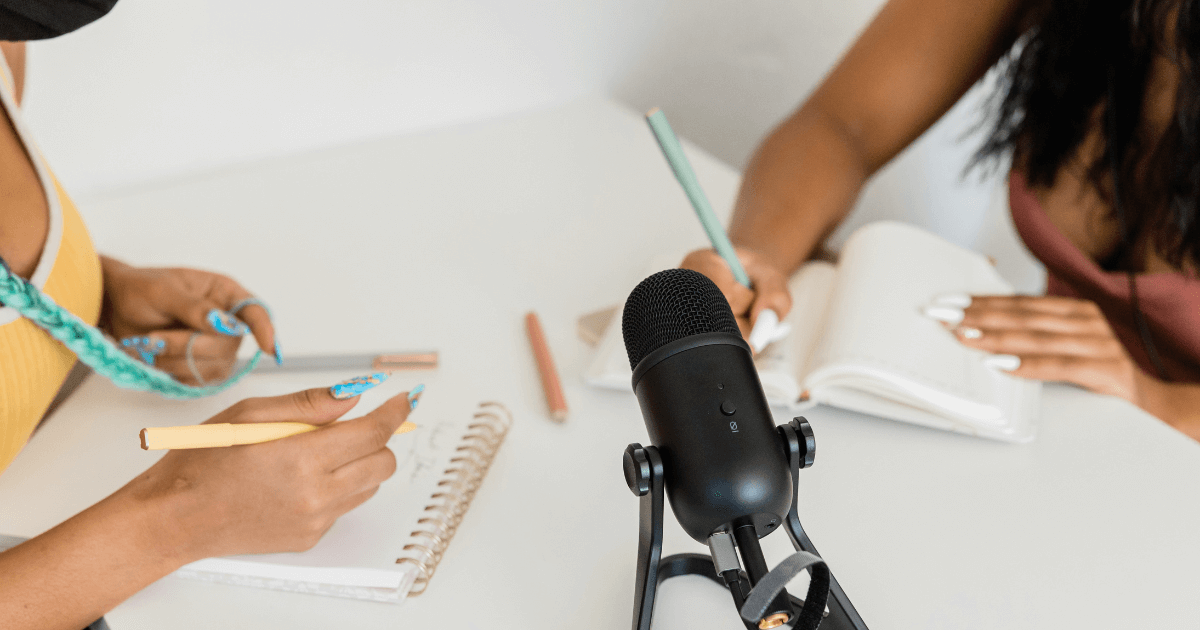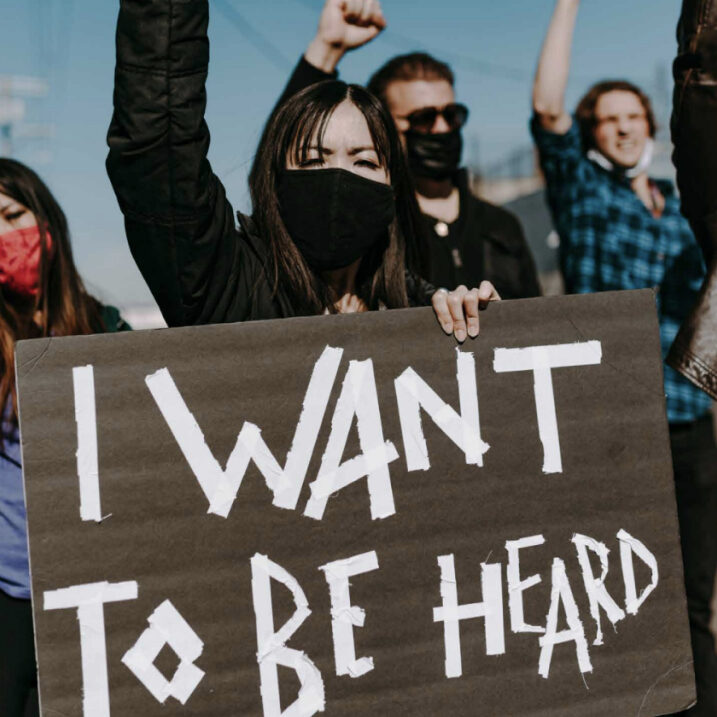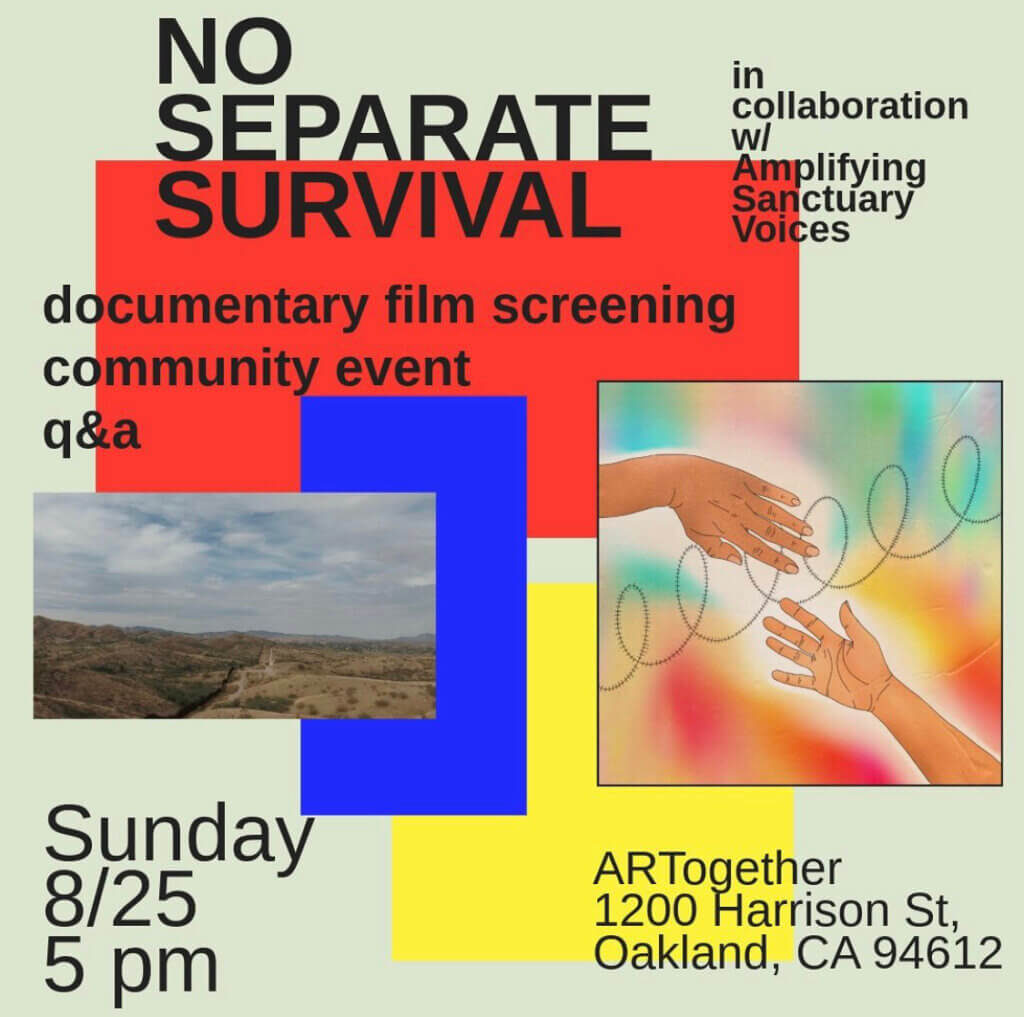
No Separate Survival is a participatory documentary film and community project that offers asylum seekers a chance to get behind the camera and share their perspectives as storytellers. Co-produced with asylum seekers on both sides of the California/Mexico border, the film project facilitated digital arts workshops for displaced migrants in Baja and Southern and Northern California, coupled with access to mental health services.
The project aims to give asylum seekers control of their narratives and to build space for healing through creative multimedia and artistic expression. In dialogue with grassroots activists, they shed light on urgent social issues inseparable from forced migration: war, poverty, colonialism, police violence, femicide, LGBTQ freedom, and land and labor rights.
Director and Producer Shabnam Piryaei collaborated with East Bay Sanctuary Covenant and Amplifying Sanctuary Voices, a community coalition (that Voice of Witness is a part of) dedicated to sharing the stories of immigrants and refugees. The documentary features two narrators from Voice of Witness oral history projects.
VOW caught up with Shabnam to ask a few questions about the film.
1. What do you hope a viewer of this documentary comes away with? Or is that a secondary consideration in the project’s aim to support the storytellers themselves?
How Juan, Irma, Luz and Belvi (the storytellers) feel about the way they and their stories are represented is incredibly important to me. In addition to this, I really hope the film will inspire other media-makers to entrust storytelling more to affected communities. And I want the audience to understand themselves as artists and storytellers who can advance education and social change.
No Separate Survival is a documentary film and an ongoing community experience. Over the past five years we have been facilitating free art and storytelling workshops for former and current asylum seekers in the US and in Mexico. Some of those participants were included in the film, but participating in the film was never a requirement for workshop participation. We really wanted to create a sustainable creative community that was dynamic and healing.
I chose a participatory approach to the film, through the workshops, because I want asylum seekers to tell their stories however they want—with as many resources and as little mediation as they desire. I believe in the power of creativity and art as a healing force and I wanted to permit unique narrative-building that doesn’t strictly rely on the commonly used frameworks used in journalistic storytelling. Also, I want asylum seekers to have agency over their own stories. For some, this means delving into their traumas, for others it may mean revealing quotidian habits, or offering glimpses into what gives them joy.
2. You attended a Voice of Witness workshop to help with your research and development. How did the workshop inform your approach?
I attended a VOW workshop called “Say it Forward: Storytelling for Social Change.” I think it was the first time I’d been in community with people who do what I do. I’ve been helping people heal in so many ways throughout my life, and I’ve been writing about trauma, writing poetry and fiction, and making films toward justice, transparency, and healing, but much of this work has been done entirely intuitively and in solitude. The VOW workshop gave me a sense of a broader community, as well as practical tools for being an ethical storyteller.
3. What are some ways you build trust with the storytellers during the process of telling and filming their stories? Particularly when it involves recounting traumatic events?
Honesty is really important for me. Being honest about who I am, why I’m there, how I do or do not benefit from the project I’m working on. Honesty about my own personal story, my journey as an immigrant, my challenges as an artist, fears, doubts…
I also enter and move through the space anchored in my heart. I need to be that expansive in order to hold space for people, for their feelings, their history, their pain, their hope. I feel so much love and compassion when I’m doing a workshop, or interviewing someone, or teaching a class. I also feel an enormous responsibility when someone trusts me. It requires attentiveness, and a recognition of sacredness, so I can’t be reckless or selfish with the stories of others.
Sometimes when you are gathering a story to share publicly, you might be hesitant to dig deeper, especially when the story is traumatic for the storyteller. But I think in not pressing, and not asking and engaging, in trying to be too polite, or too afraid of hurting the person, you come out with a bad story, a weak one. And the reality is when someone is agreeing to share their story in order to amplify it, in the interest of healing themselves and healing others, then you have to honor their consent. You have to honor the story by letting it show itself.
4. There are some moments throughout the film where the narration is animated. What spurred that creative decision?
I knew from the start that I wanted animation in the film. Animation, depending on the style, has an inherent levity and play for me. But animation is also quite expensive to pay for. Over the five years of making No Separate Survival, we gathered what animation we could with very limited funds. And I’m grateful for it, I think it’s incredibly beautiful.
The content of the film is heavy, and any time I’m handling or conveying pain—mine or others—I am diligently trying to bring light into the dark. Sometimes that means pulling it in, sometimes that means pointing out the light that’s been there all along.
Also, the decision was practical. It was another way to add varied visual texture to a film that draws from a lot of different media. It was a way to lean into the variety of voices, instead of imposing a forced single tone.
Join us at the film screening on Sunday, August 25th at 5pm PT at ARTogether in Oakland, CA!
